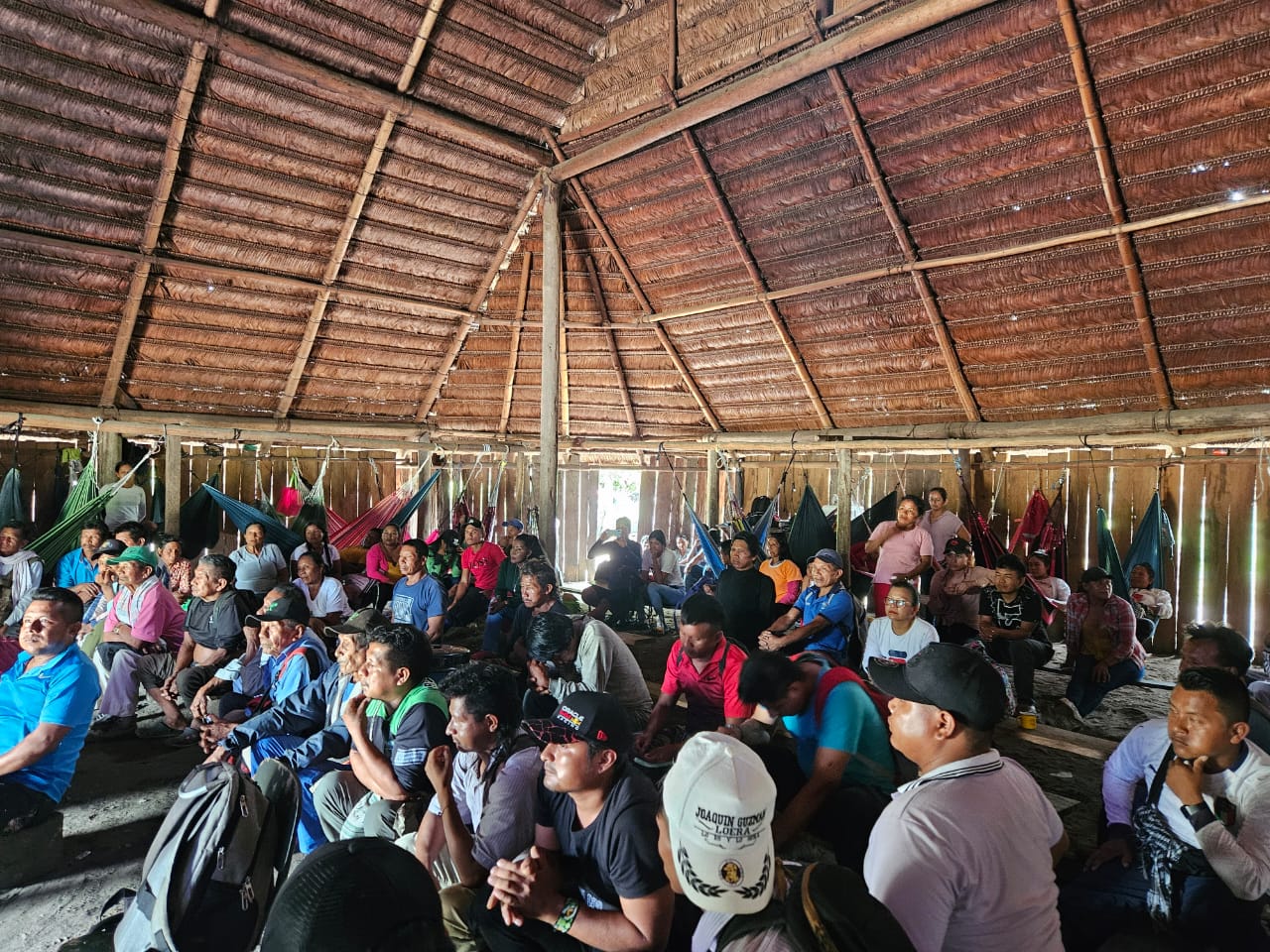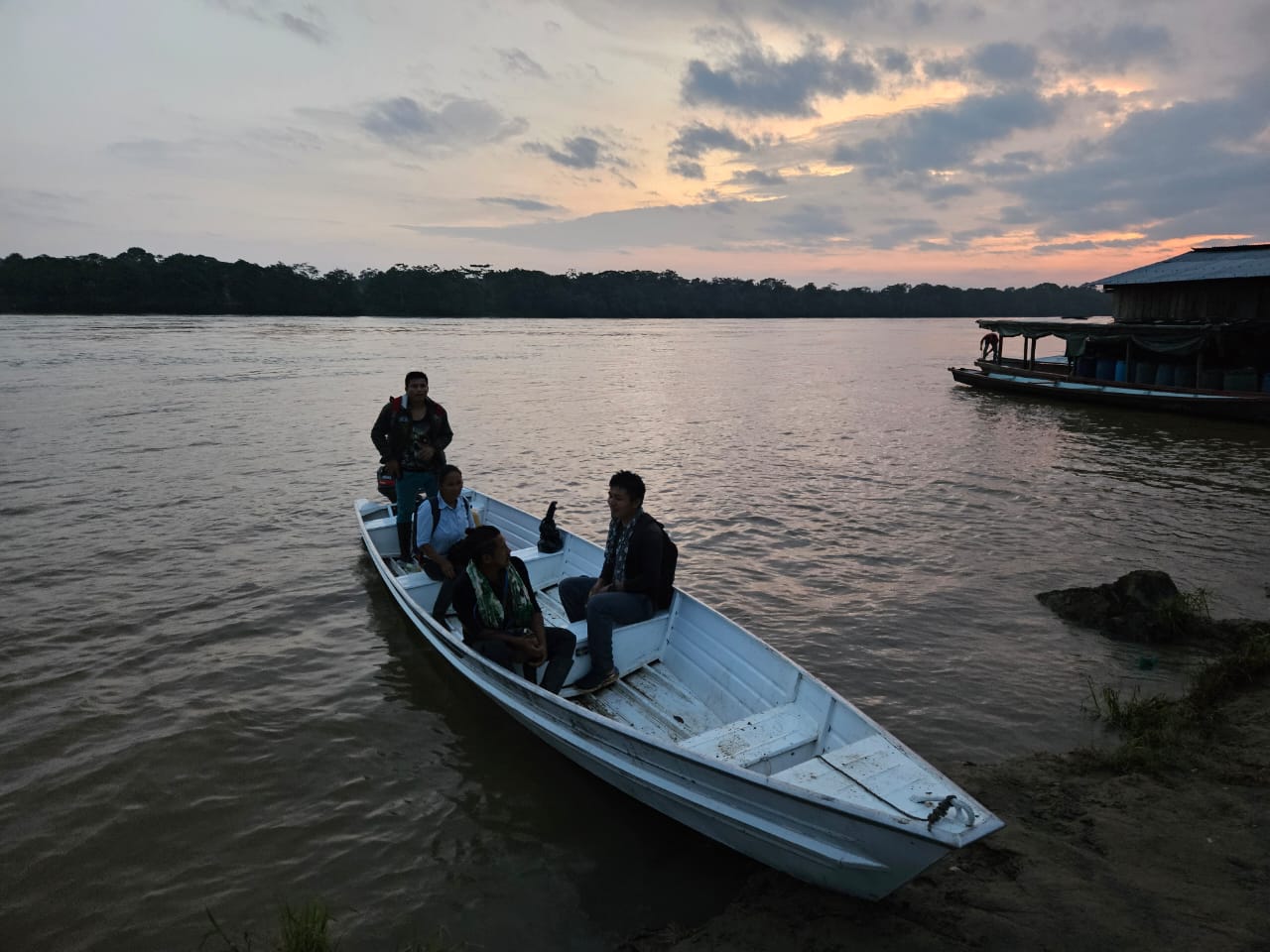Andoke
Some Facts
The Andoke people (or Andoque, endonym pʌ́ʌsiʌ́hʌ ‘people of the axe’) have inhabited the Amazon rainforest in the area of the Caquetá and Putumayo rivers in south-eastern Colombia for centuries. Their language is an isolate, i.e. a language without any surviving relatives. Andoke society is part of the “People of the Center” cultural group, in an area of intense cultural diffusion in which various peoples, such as the Witoto, Bora and Muinane, live and trade alongside the Andoke.
The “People of the Center”, as they call themselves, share various customs and rituals: the ritual consumption of pounded coca leaves (mambe), the use of liquid tobacco paste (ambil) and the organization of daily life around the community house (maloca) are some of the features that characterize the “People of the Center”.
In terms of language, Andoke is characterized by several features: on the one hand, the high number of almost 30 vowels (Landaburu 2023: 127), on the other hand, the use of different grammatical forms to express whether both speakers have the same access to the information being said at the moment of speaking. The close cultural contact with other speaker communities in the region seems to have created linguistic similarities as well - according to current research.
The Andoke language is severely threatened by external influences. Today, there are just under 40-50 speakers who speak Andoke fluently. Few children learn to speak the language nowadays. Their own opinions with regards to their language, as well as their wishes for the future are presented in the following quotes from some of the members of the Andoke community.
Language family
Linguistic structures
In the Andoke language there are two sets of prefixes on the verb which are called ‘directionals’. The first set consists of the opposing prefixes y(i)- and s(i)-, which correspond to ‘up’ and ‘down’ in English. When they attach to the verb, they can take on meanings like ‘move upstream/downstream’, ‘to the West/East’ and even ‘close to home’ versus ‘close to the forest’ (Landaburu 2023: 147–148).
Similar to verbal prefixes in German and verbal particles in English, they can take on special (lexicalized) meanings in certain combinations. The example yi-kɤ́ ̃ẽĩ, where kɤ́ ̃ẽĩ means “give” (German “geben”), can be translated both as “give” and “hand over” or German “über-geben”, but not as “give up/upwards/upstream/close to home”.-
oɤ́ dúʔu yi-kɤ̃́ẽĩ
to.me water up-give!
‘Give me water!’
-
katɤ́hɤ bʌ ɤ̃mã nõ-pɤsɤkai
begin_to it.is with.them come-tell
‘[And] I begin to come and talk with them.’
The typical salutation also contains a form of the first prefix: páa bʌ nõ-poi, which literally means ‘I have already come and arrived’.
Finally, both of these sets of prefixes may be combined, as we see in the following example, where the fish move both up (y-) from the water and closer (nã-).-
beiɤ́ y-ő-nã-mãhakaini
as.fish up-at_them-come-they.suck.several_times
‘In the form of fish, they came massively out of the water to suck at them (fruits).’


